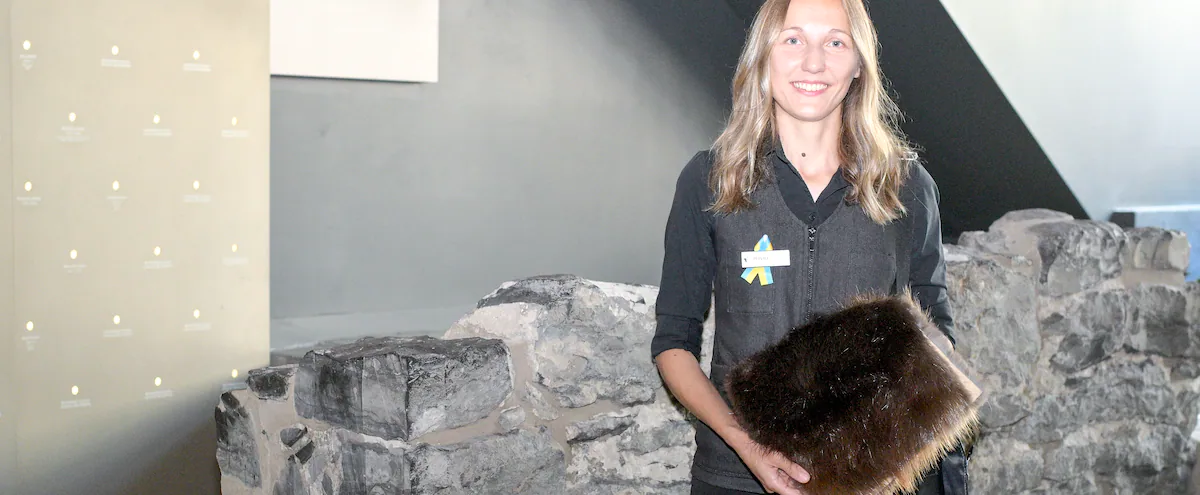Inside Montreal, journalist Louis-Philippe Messier travels mainly on the run, his office in his backpack, on the lookout for fascinating subjects and people. He speaks to everyone and is interested in all walks of life in this urban chronicle.
A good number of Ukrainian war refugees speak neither French nor English. Montreal, Quebec and Canada, for them, do not evoke much. But thanks to a kind-hearted tour guide, that’s all history.
“I explain to them where they are, why it’s like that here, I tell them the story of their host country and it fascinates them, their eyes light up! enthuses Galyna Lykhoshva, a guide of Ukrainian origin at the Pointe-à-Callière museum.
Her patronymic proving tortuous for the French language, Galyna insists that I designate her by her first name.
“President Volodymyr Zelensky offered every citizen to do their part in their work, and I am a guide,” Galyna says.
Photo Martin Alarie
The guide from the Pointe-à-Callière museum gave me an interview at her workplace on her country’s Independence Day.
The 36-year-old woman has given herself a mission: to help exiles from her native nation get to know their host nation.
“I offered tours in Ukrainian and received 200 requests in two days! »
Curiosity
“Myself, to perfect my French when I arrived in 2016, I became a volunteer guide for the Château Ramezay, a historic building in Old Montreal,” recalls Galyna.
In a section of Pointe-à-Callière, archaeologists have rediscovered the old stones of the original foundation of Fort Ville-Marie (the original name of Montreal) which have been covered with a glass floor.
“My compatriots can therefore look at the real places where Jeanne Mance, Maisonneuve and Governor Callière lived, it impresses them! »
The circumstances of their arrival and the fact that almost all the men of fighting age remained there to confront the Russian army meant that the groups were moved by stories such as those of the Lachine massacre or the Great Peace. .
Photo courtesy of Galyna Lili
Ukrainian children are fascinated by the glass floor overlooking the archaeological remains of Fort Ville-Marie.
“Many Ukrainians are believers and the mystical Catholic circumstances of the founding of Montreal affect them very much, as well as the story of the cross represented today on Mount Royal,” says Galyna.
Assignment
The guide first paid for part of the visits of her penniless compatriots out of her own pocket. A crowdfunding campaign, where his fellow guides have been generous, has since enabled him to bail out.
On the occasion of Ukraine’s Independence Day last Wednesday, the Pointe-à-Callière Museum decided to offer these visits in Ukrainian free of charge to refugees.
“War is a bad thing, but when an enemy wants to annihilate you, it helps to understand the importance of culture, identity and language that must be safeguarded at all costs”, Galina said.
As of September 4, the guide will offer a visit to Quebecers who want to know Little Ukraine in Montreal.
“It costs $30. The money will go to the Ukrainian army. »
As a full-time museum guide who offers neighborhood tours on her days off, the young woman doesn’t get much rest.
“I will rest when the war is over,” she said.
For more information on her guided tours, she invites you to go to her Facebook page, “Galyna Lili”.


